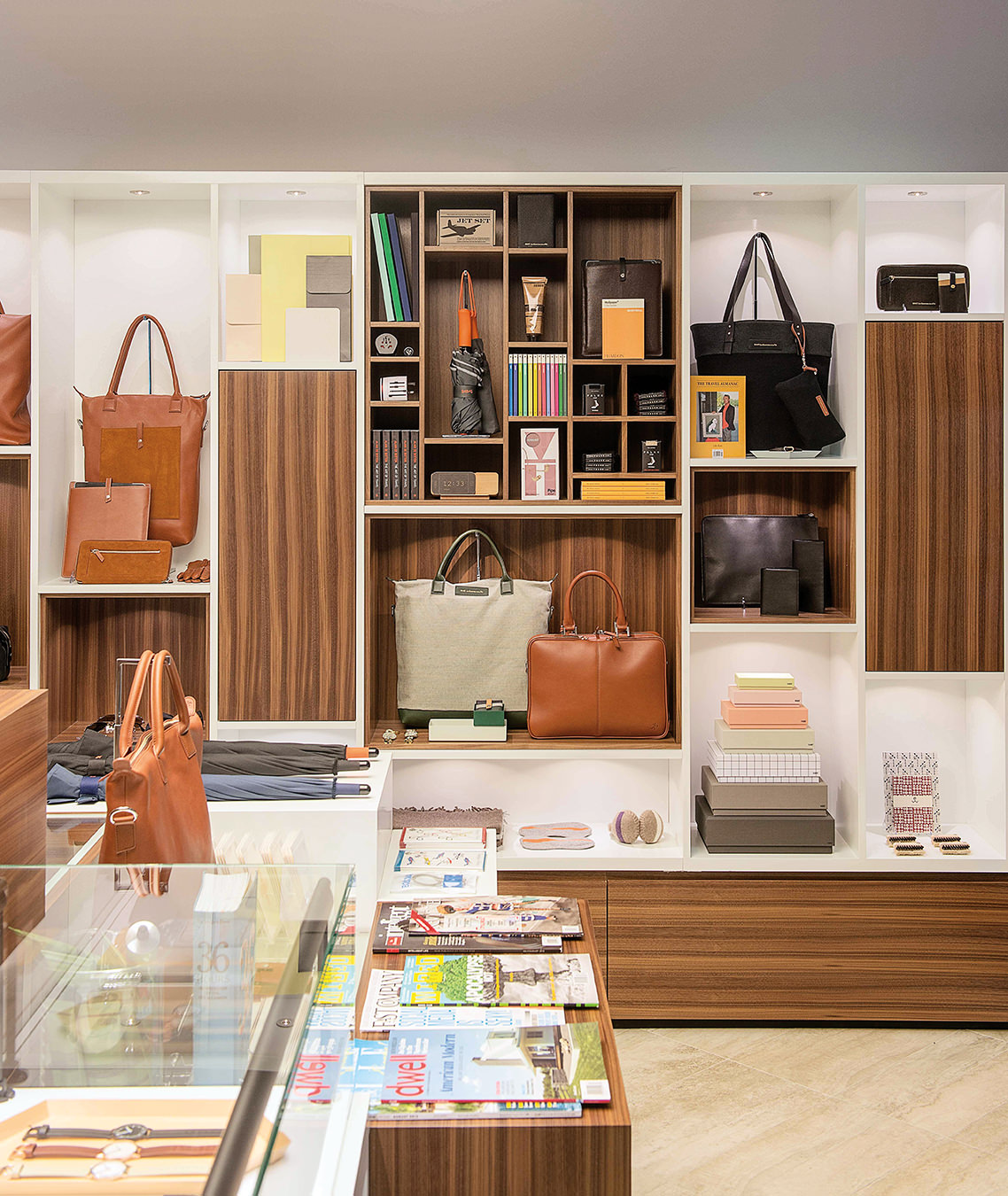-

Andreas Angelidakis, DEMOS – A Reconstruction, 2018.
-
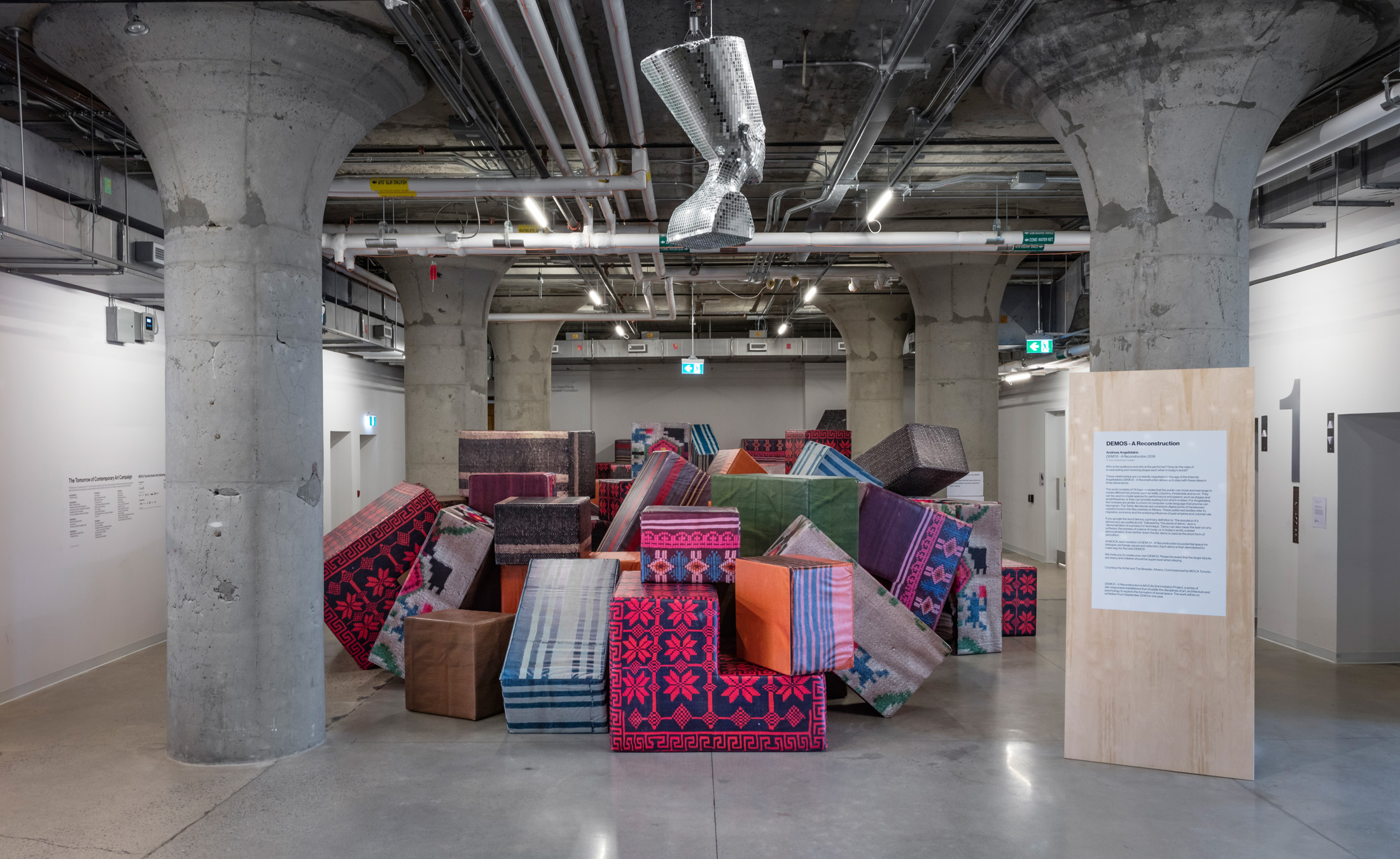
Above: Awol Erizku, Nefertiti—Miles Davis, 2017. Below: Andreas Angelidakis, DEMOS – A Reconstruction, 2018.
-
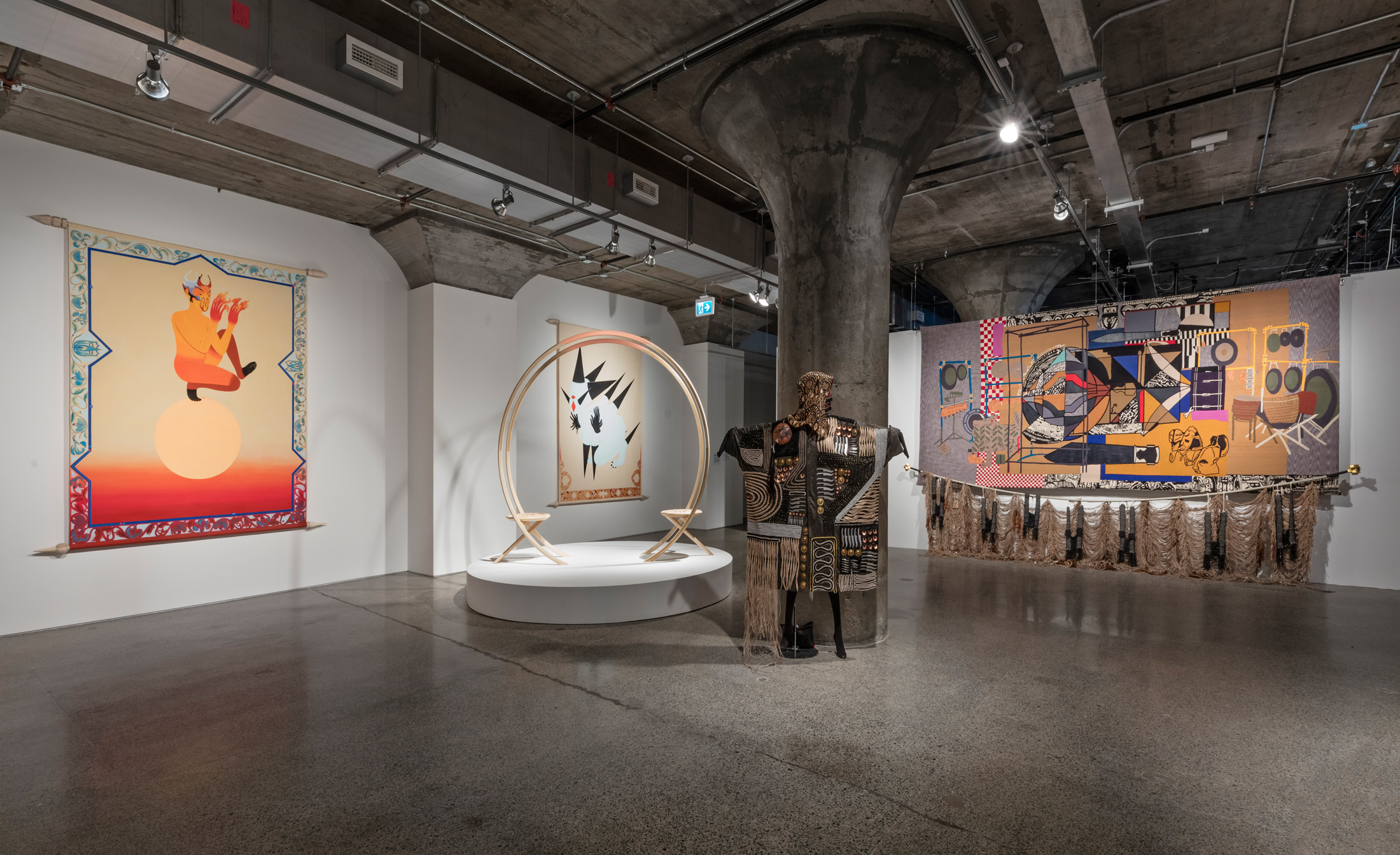
Left: Rajni Perera, Banners for New Empires, 2018. Foreground: Rajni Perera, Talisman, 2018. Nep Sidhu with Maikoiyo Alley-Barnes, Nicholas Galanin, No Pigs in Paradise, Series 2, 2017/2018. Right: Nep Sidhu, The Sound Sculpture Forms & Knowledge Transfers of Kahil El’Zabar (When My Drums Come Knocking, They Watch Series), 2017/2018.
-

Nep Sidhu, Quazarz Pinball Arcade with Security and Leisure Enhancement Console (When My Drums Come Knocking, They Watch), 2017/2018.
-

Foreground: Dineo Seshee Bopape, And-In. The Light of This._ , 2017/2018. Background: Barbara Kruger, (Untitled) Doubt + BELIEF, 2018. Windows: Can Altay, Three Filtered Embrace Framed, 2018.
-

Matilda Aslizadeh, Resort, 2016.
-
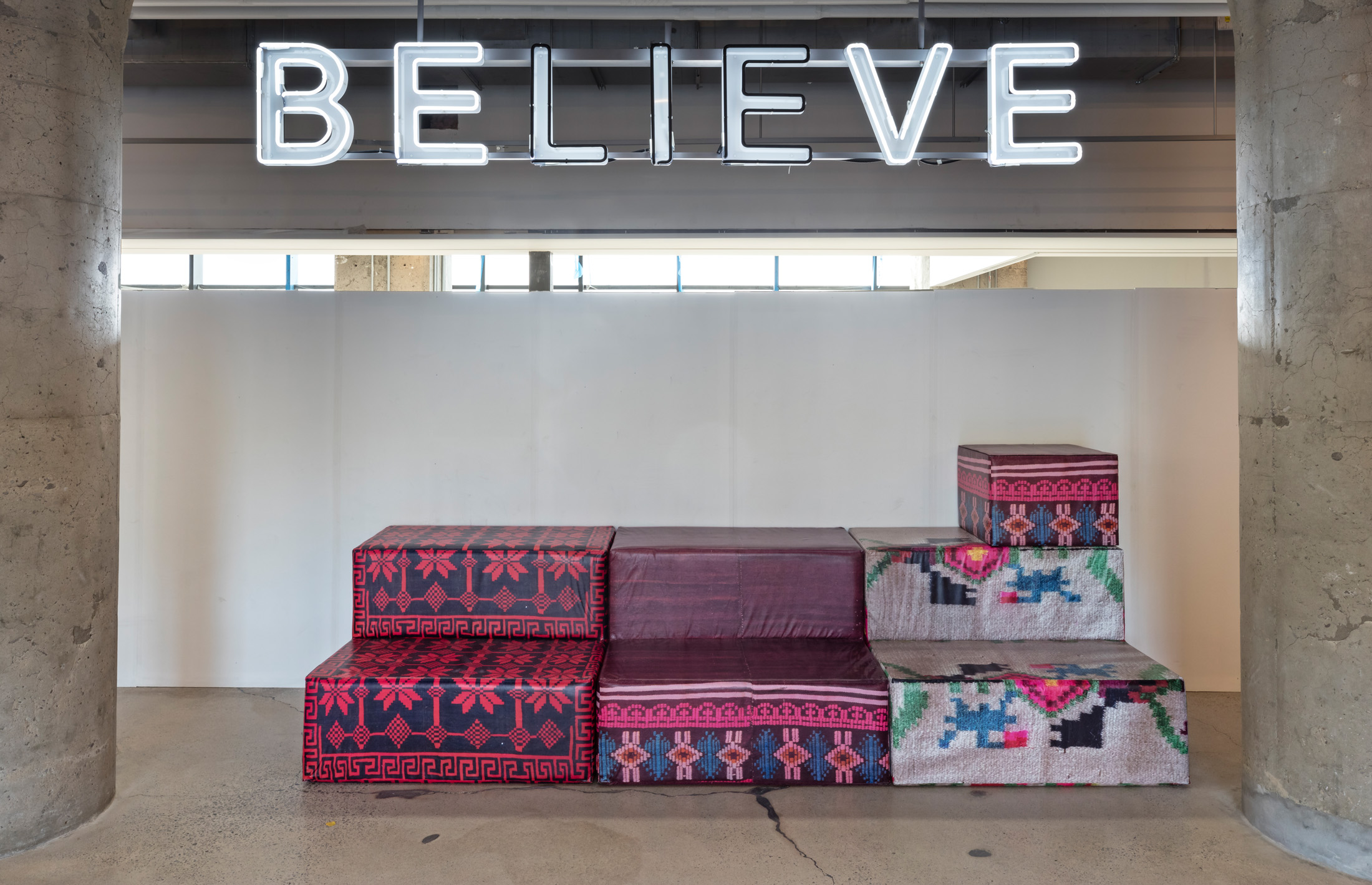
Above: Kendell Geers, BE:LIE:VE, 2002/2018. Below: Andreas Angelidakis, DEMOS – A Reconstruction, 2018.
-

Foreground: Dineo Seshee Bopape, And-In. The Light of This._ , 2017/2018. Background: Matilda Aslizadeh, Resort, 2016.
-
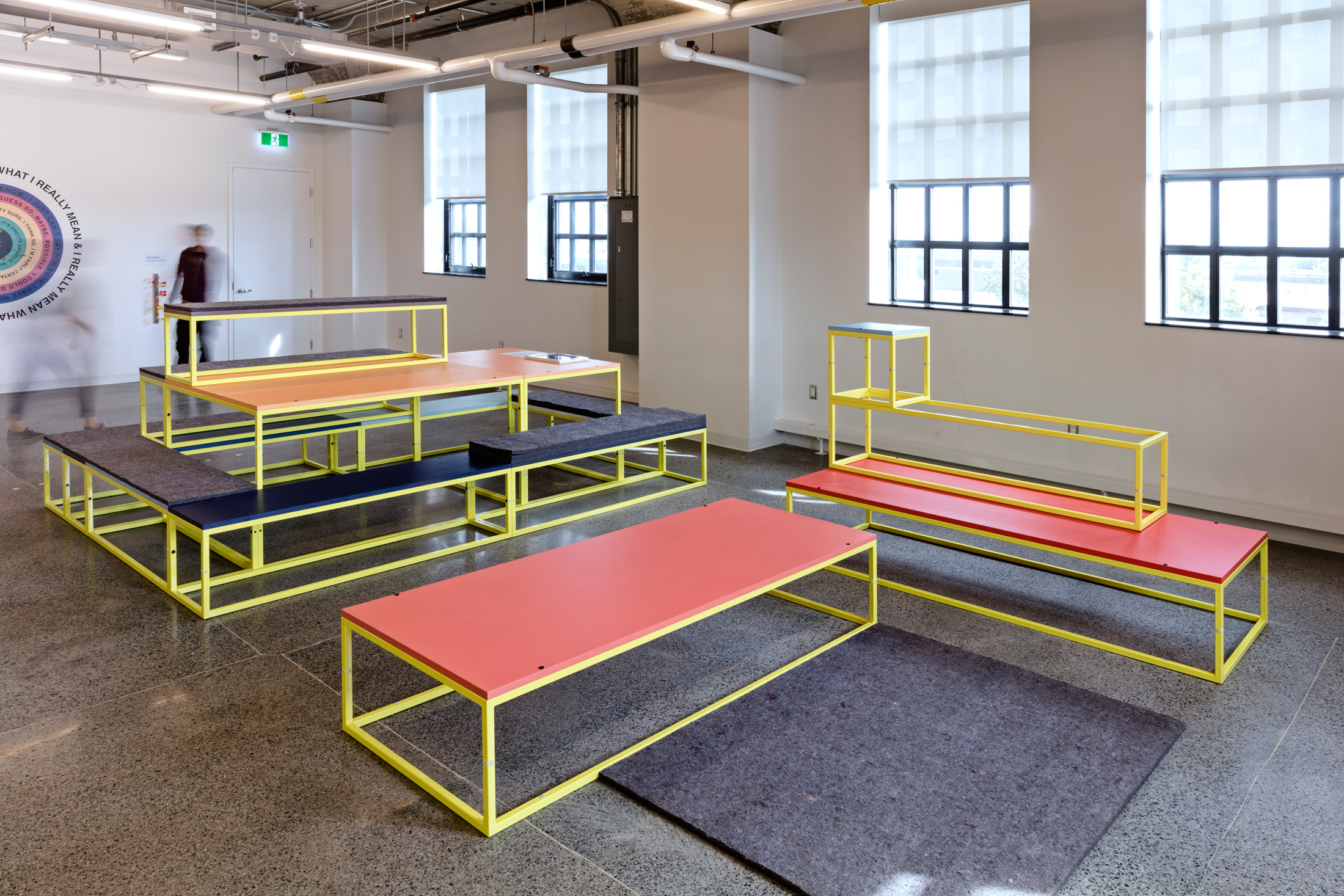
Furniture: Adrian Blackwell, Scaffold and Horizons (Earth and Sky), 2018. Dartboard: Hiba Abdallah and Justin Langlois, Rehearsing Disagreement, 2018.
-
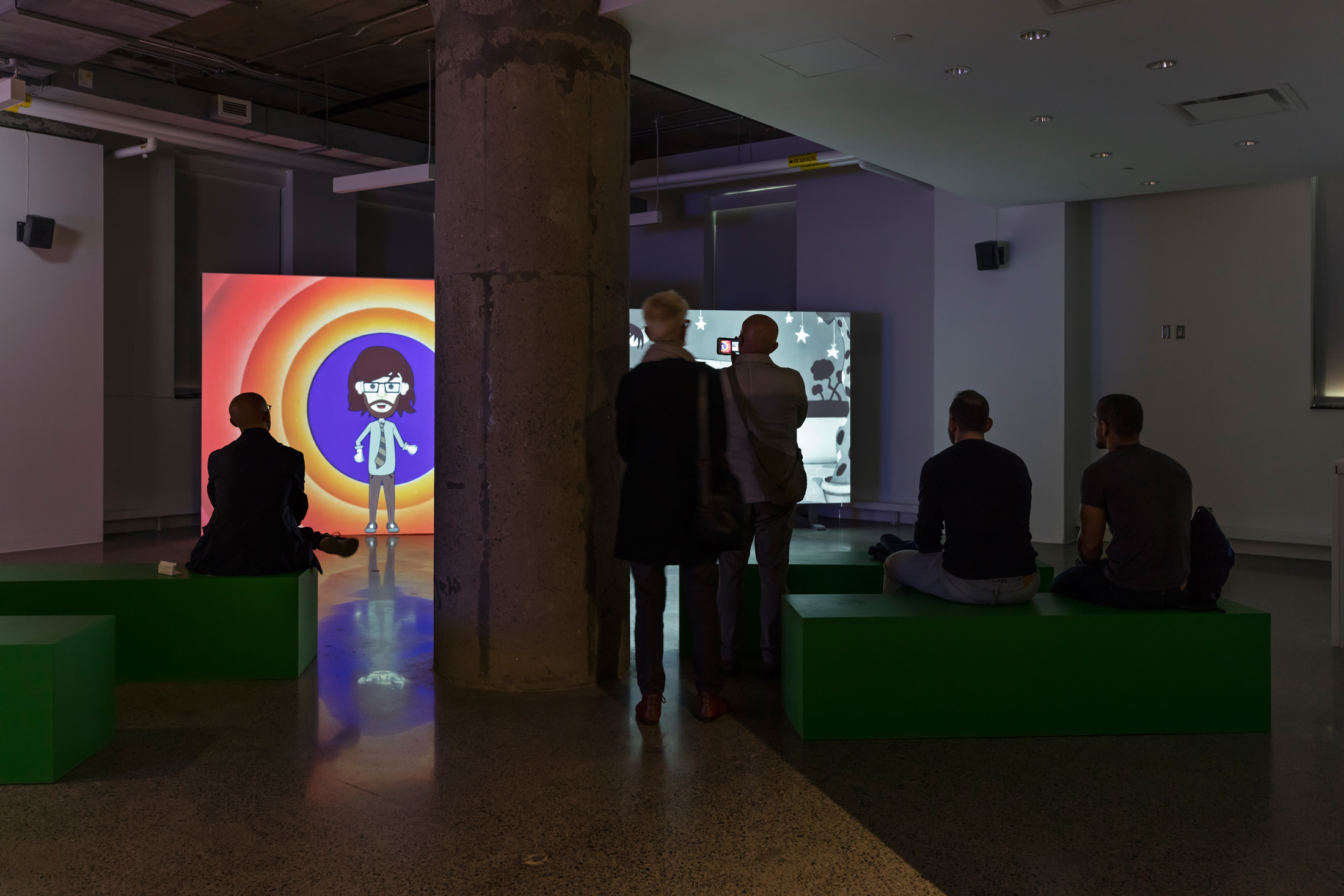
Andy Holden, Installation View of Laws of Motion in a Cartoon Landscape, 2011-16.
-

Hiba Abdallah and Justin Langlois, Striking a Balance – Rehearsing Disagreement, 2018.
-
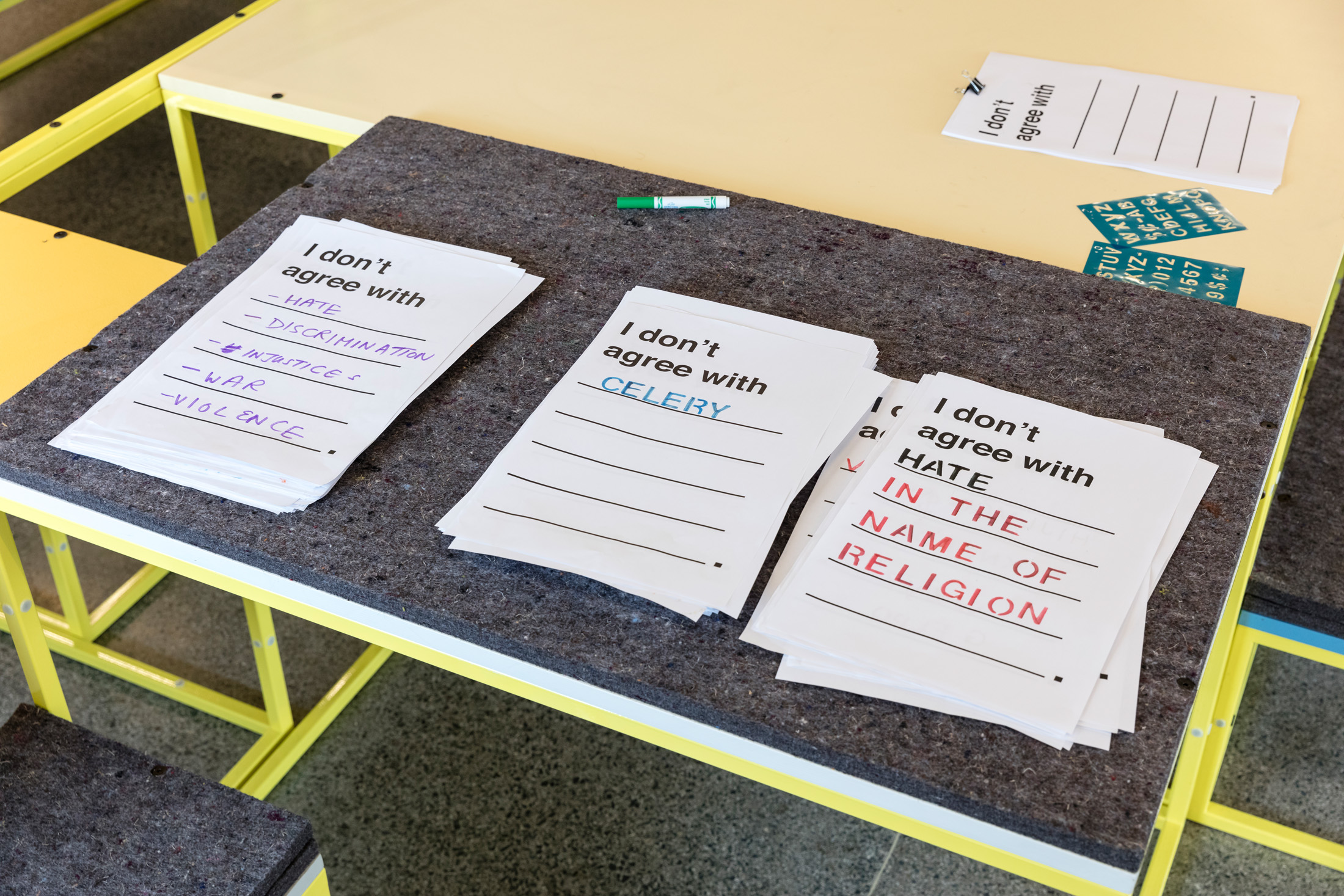
Furniture: Adrian Blackwell, Scaffold and Horizons (Earth and Sky), 2018. Paper and stencils: Hiba Abdallah and Justin Langlois, But what do you really think… – Rehearsing Disagreement, 2018.
-
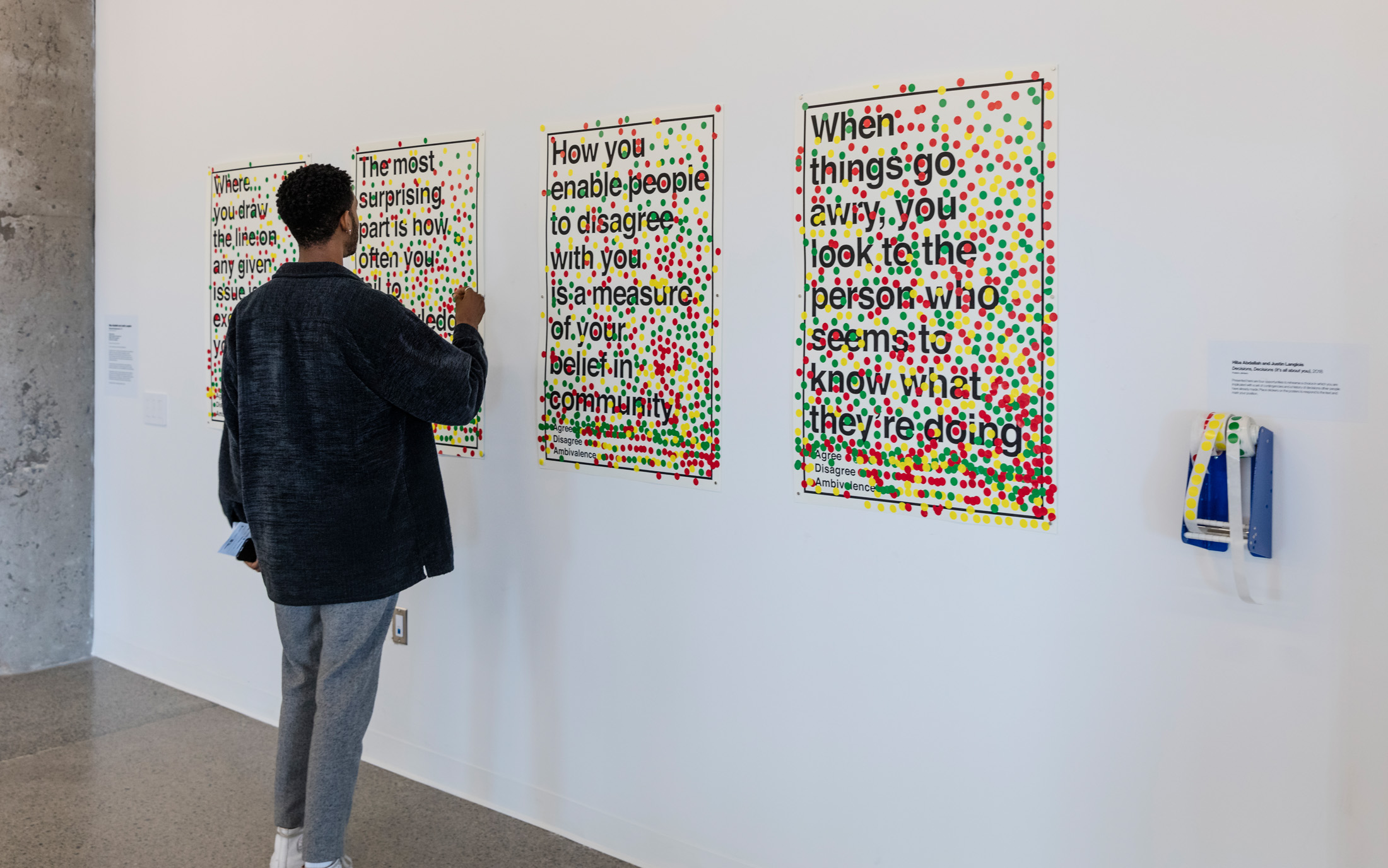
Hiba Abdallah and Justin Langlois, Decisions, Decisions (it’s all about you) – Rehearsing Disagreement, 2018.
Museum of Contemporary Art Toronto
A new home in the Junction Triangle.
After a three-year hiatus, the Museum of Contemporary Art Toronto (MOCA) has reopened its doors in a century-old, former aluminum factory in the city’s West End. Previously known as the Museum of Canadian Contemporary Art, the rebranded museum’s grand opening took place over two days starting on September 22 and was free to the public.
The festivities included the unveiling of MOCA’s inaugural exhibition Believe, featuring work by 16 Canadian and international artists, and running until January 6, 2019. “The title has a lot to do with my belief that this project could happen,” said curator David Liss, who has been with the museum since 2001. “I believed that we could bring a contemporary art museum to Canada’s largest city. And we did. We have.”
Other exhibition highlights include And-in, The Light of This a mixed media site-specific installation combining compressed soil, feathers, flowers, and 18-karat gold leaf by South African artist Dineo Seshee Bopape, and Demos – A Reconstruction, a commission inviting participants to reshape their surrounding space using 74 moveable modules created by Greek artist Andreas Angelidakis.
“I believed that we could bring a contemporary art museum to Canada’s largest city. And we did. We have.”
The MOCA now occupies 55,000-square-feet of the historic Tower Automotive Building in the Junction Triangle on Sterling Road—a space five times larger than its previous Queen Street West location, which closed in 2015 to make way for a condo development. The museum is spread over the lower half of the building’s 10 floors: on the ground level is a free community space, bookstore, café, and Angelidakis’ installation; the second and third floors are for main exhibitions and currently displays Believe; the fourth is devoted to artist residencies and special projects; and on the fifth floor is an exhibition of moving image works by Andy Holden.
Built in 1919, the Tower Automotive Building’s renovation was overseen by ArchitectsAlliance, which worked with heritage firm ERA Architects to update the tower while retaining much of its original character. The building was retrofitted with new technology in support of interactive programming like Idea Projects, a collaboration between MOCA and the Ontario Science Centre, which will provide residences for up to 32 artists exploring science and technology through the lens of art.
Still, its historical character shines through in vintage architectural details including 16-foot high wooden factory doors, fluted columns of weathered concrete, and a loading dock now serving as the museum’s entranceway. Toronto design firm MSDS Studio also included a nod to the building’s past life in aluminum production, by accenting the interior with metal clad furnishings, much of it made by local mill workers.
The MOCA reopening marks the first of nine phases in an ambitious project for the burgeoning neighbourhood, dubbed the Lower JCT, from developer Castlepoint Numa and Greybrook Realty Partners. While upcoming residential, commercial, and retail are still in the works, the MOCA is an excellent first step and will surely be an important cultural anchor for the up-and-coming community.
Believe runs from September 22, 2018 to January 6, 2019 and Demos – A Reconstruction runs from September 22, 2018 to August 2019.
Photos by Toni Hafkenscheid, courtesy of Museum of Contemporary Art Toronto.
_________
Never miss a story. Sign up for NUVO’s weekly newsletter, here.



